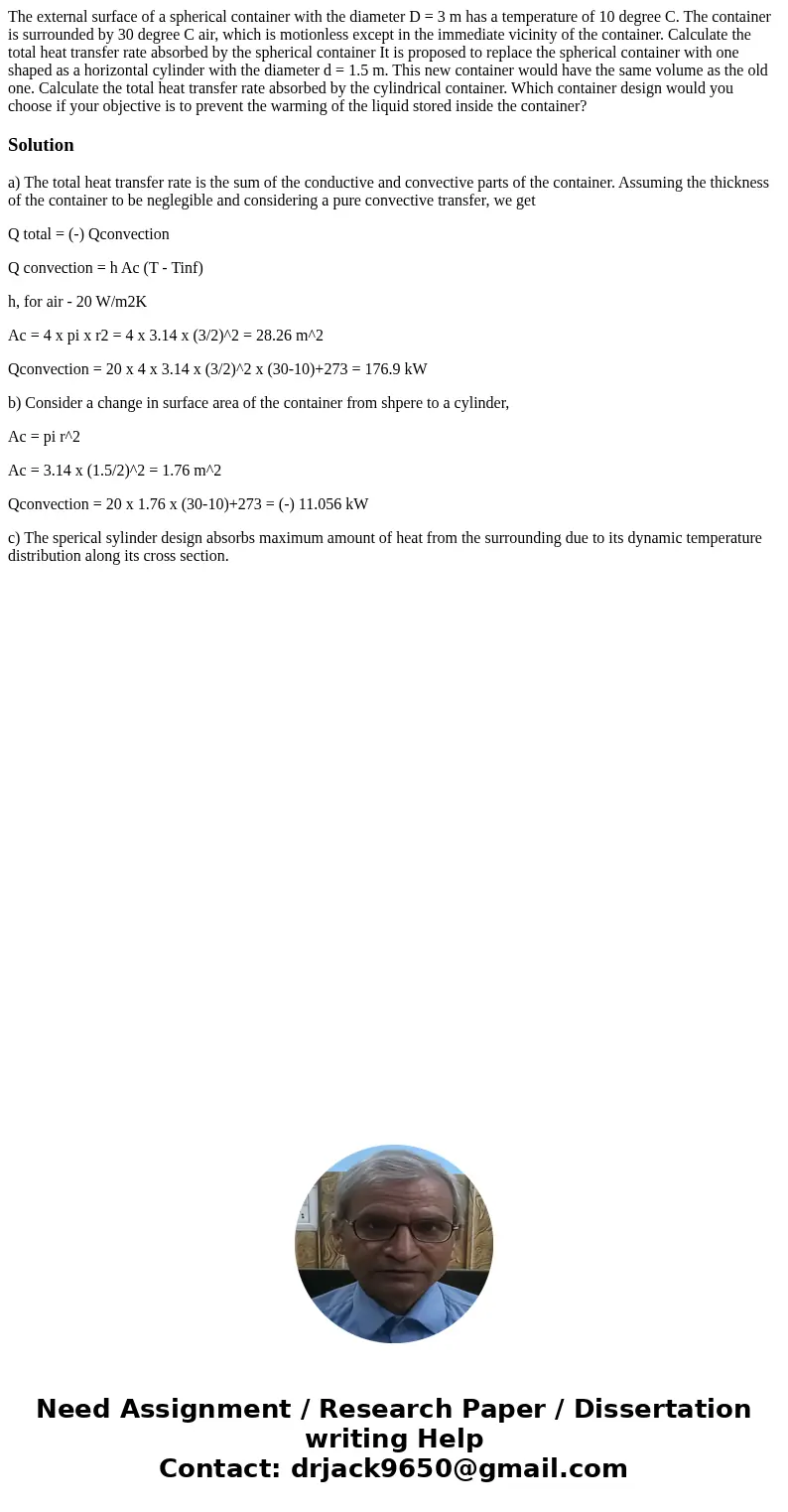The external surface of a spherical container with the diame
The external surface of a spherical container with the diameter D = 3 m has a temperature of 10 degree C. The container is surrounded by 30 degree C air, which is motionless except in the immediate vicinity of the container. Calculate the total heat transfer rate absorbed by the spherical container It is proposed to replace the spherical container with one shaped as a horizontal cylinder with the diameter d = 1.5 m. This new container would have the same volume as the old one. Calculate the total heat transfer rate absorbed by the cylindrical container. Which container design would you choose if your objective is to prevent the warming of the liquid stored inside the container?
Solution
a) The total heat transfer rate is the sum of the conductive and convective parts of the container. Assuming the thickness of the container to be neglegible and considering a pure convective transfer, we get
Q total = (-) Qconvection
Q convection = h Ac (T - Tinf)
h, for air - 20 W/m2K
Ac = 4 x pi x r2 = 4 x 3.14 x (3/2)^2 = 28.26 m^2
Qconvection = 20 x 4 x 3.14 x (3/2)^2 x (30-10)+273 = 176.9 kW
b) Consider a change in surface area of the container from shpere to a cylinder,
Ac = pi r^2
Ac = 3.14 x (1.5/2)^2 = 1.76 m^2
Qconvection = 20 x 1.76 x (30-10)+273 = (-) 11.056 kW
c) The sperical sylinder design absorbs maximum amount of heat from the surrounding due to its dynamic temperature distribution along its cross section.

 Homework Sourse
Homework Sourse